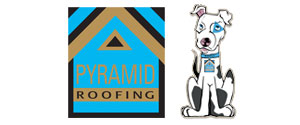- Do you subscribe to Dharma Dog Training’s Newsletter? You should.
- A Unique Campaign from The Humane Society of the United States
- Rabid bats in Omaha- Stay safe, prepared with these tips
- Springtime Activities in Omaha
- Mill Dog Monthly from Bailing Out Benji
- World Spay Day, Legislative Alert in Nebraska
- Attend the Nebraska Rescue Council’s monthly meeting this Saturday
- Five Hard-to-Ignore Reasons to Adopt!
- Paws in Pink to Benefit Breast Cancer Foundation
- VCA, Inc. Acquires MidWest Vet Specialists from Kansas State University
Feeding Frenzy: How Often Should You Fill Your Pet’s Bowl?

Are you unsure how much food to give your dog or cat and how often to fill your pet’s bowl? Knowing the appropriate amount to feed your pet can be a challenge, as it often varies due to specific criteria.
Growing puppies and kittens need more calories than an adult dog or cat of the same weight. They require smaller, more frequent meals because of their tiny tummies. Adult pets should eat two meals daily, about 12 hours apart. Free feeding your pet can lead to weight gain.
Pet parents are responsible for ensuring their furry friends receive a nutritionally balanced diet. You can also confer with your veterinarian about food portions. This article will inform you how often you should fill your pet’s bowl.
How Often You Should Fill Your Pet’s Bowl
We have all experienced our adorable furry companions looking up at us with sad puppy dog or kitty cat eyes when their food bowl is empty. We are all guilty of giving in to our pet’s cries for more. But it may not be the best idea to indulge them. How often you fill your pet’s bowl depends on certain criteria:
- Age
- Breed
- Weight
- Activity level
These factors all play a role in how often we should fill our pet’s food bowl. Most dogs and cats like to eat on a fixed schedule. They become acclimated to eating at the same time daily. Puppies and kittens also have separate nutritional needs than their adult counterparts.
Age of Pet
Your dog or cat should consume a diet that meets the established AAFCO (Association of American Feed Control Officials) requirements. Puppies and kittens should get five to eight percent of their body weight in food. Smaller, more frequent meals are the key.
Kittens grow quickly and must consume enough food to meet their nutritional requirements. A young kitten may eat a quarter to a half cup of food at a time. Older dogs tend to be more sedentary, which means they can thrive on fewer calories.
Also, as dogs age, they often pack on the pounds. It’s the opposite for older cats, who tend to slim down as they age. You must practice a careful approach to feeding your pet. The following includes two separate charts for dogs and cats:
Dog Feeding Chart
| Age | Times per Day | How Much Per Feeding Daily | What Type of Food |
| 6 – 12 Weeks | 4 | ½ Cup | Puppy |
| 3 – 6 Months | 3 | ½ Cup | Puppy |
| 6 – 12 Months | 2 | 1 ¼ Cup | Puppy |
| 1 – 7 Years | 2 | 1 ¾ Cup | Adult |
| 7+ Years | 2 | 1 ¼ Cup | Senior |
Cat Feeding Chart
| Age | Times per Day | How Much Per Feeding Daily | What Type of Food |
| 6 – 12 Weeks | 3 | ¼ – ½ Cup | Kitten |
| 3 – 6 Months | 3 | ½ – ¾ Cup | Kitten |
| 6 – 12 Months | 2 | ½ – ¾ Cup | Kitten |
| 1 – 7 Months | 2 | 1/3 – ½ Cup | Adult |
| 7+ Years | 1 – 2 | 1/3 – ½ Cup | Senior |
Feed According to Breed
Breed-specific diets are popular because different breeds are more susceptible to certain conditions. For example, Labrador pups and Beagles can become overweight quickly. So, free feeding is not recommended.
According to Tufts, “Breed-specific diets for dogs like Labrador Retrievers are typically lower in calories.” A specific breed could also be naturally larger, like Ragdoll cats. So, they will likely need to eat more than smaller cats.
Weight and Body Condition Score
The body condition score places dogs and cats into three groups: underweight, overweight, and ideal. Finding out which group your pet fits into requires performing a check:
- Feel the ribs – You should feel your pet’s ribs when you run your fingers down their side
- Waist check – Look at your pet from above. You should be able to see their waist.
- Tummy test – Look at your pet from the side. You should see a “slight tuck” in their tummy.
If you cannot see your pet’s waist, or you can feel abdominal fat, they may be overweight. If your pet is overweight, do not free-feed them. Measure a portion of food for them and exercise them more.
Activity Level
The more active your pet is, the more calories they will need. You may even want to change the amount of food you give your dog or cat based on how much exercise they get that day. National Academies explains that “growth, pregnancy, lactation, and exercise increase your dog’s caloric needs.” Notice that when your dog plays a vigorous game of fetch or when your cat plays, they are hungrier.
Why Free Feeding is Not a Good Idea
Free Feeding your pet means you set down a big bowl of food for them to eat throughout the day without practicing portion control and allowing them to graze as much as they please, possibly refilling their bowl as it gets low. Truthfully, it is better to proactively manage their weight so they do not overeat. Sticking to a schedule works best, as pets respond favorably to a routine.
Conclusion
There are several factors involved in how much food your pet eats. Age, breed, weight, and activity level are all important guidelines to determine how much to feed your pet. Consider these factors whenever you fill your pet’s food bowl.
Latest News
-
3 Tips for Pet Owners on Training Rescue Dogs
Owning a rescue dog can take some work compared to...
- Posted 3 weeks ago
- 0
-
Choosing the Right Pet for Your Lifestyle
Are you thinking about getting a pet but unsure what...
- Posted 1 month ago
- 0
-
How to Make Your Rescue Pet as Comfortable as Possible
Did you bring home a new pet from a shelter...
- Posted 2 months ago
- 0
-
How Having A Pet Can Change Your Life
Having a pet can open your heart in ways that...
- Posted 7 months ago
- 0
-
How To Improve The Life Of Your Senior Pet
Do you have an elderly fur baby and want to...
- Posted 8 months ago
- 0
-
Springtime Activities To Enjoy With Your Furry Friends
Are you preparing for warmer weather and want some ideas...
- Posted 9 months ago
- 0
-
Pros And Cons Of Microchipping Your Pets
Have you considered whether your pets should be microchipped and...
- Posted 9 months ago
- 0


















You must be logged in to post a comment Login